Disaster Preparedness Strategies for Persons with Disabilities
Disasters can strike at any moment, and for individuals with disabilities, the stakes are often higher. That's why it's crucial to have effective disaster preparedness strategies in place. This article dives deep into the essential strategies that ensure individuals with disabilities are not only prepared but can also respond effectively during emergencies. By highlighting specific considerations, available resources, and support systems, we aim to enhance safety and resilience during those critical moments.
Recognizing the diverse needs of persons with disabilities is paramount in disaster preparedness. Disabilities can vary widely, from mobility impairments to sensory challenges, and each type can significantly impact how individuals respond to emergencies. For example, someone with a hearing impairment may not hear alarms or announcements, while someone with a mobility issue might struggle to evacuate quickly. Tailoring strategies to meet these unique needs is essential. It’s like preparing a dish; you wouldn’t use the same ingredients for every recipe. Instead, you adjust based on what you’re cooking. Similarly, understanding the specific requirements of individuals with disabilities allows for a more effective and personalized approach to disaster preparedness.
An effective emergency plan is vital for everyone, especially for persons with disabilities. This plan should include key components tailored to individual needs. Think of it as a roadmap to safety in times of chaos. It should cover communication methods, transportation arrangements, and designated meeting places. For instance, if a person relies on a wheelchair, identifying accessible routes and transportation options is crucial. Additionally, having a clear communication plan ensures that everyone involved understands their roles during an emergency. It’s not just about having a plan; it’s about having the right plan that suits your unique situation.
Effective communication is essential during a disaster. Without timely information and instructions, individuals may find themselves in precarious situations. Therefore, implementing various communication strategies is vital. For example, ensuring that emergency alerts are available in multiple formats—such as text, audio, and visual signals—can make a significant difference. Imagine being in a crowded area when an emergency alert goes off; if you can’t hear it or see it, you might miss critical information. Thus, planning for accessible communication methods is not just a good idea; it’s a necessity.
Providing information in accessible formats is crucial for ensuring everyone understands emergency instructions and updates. This includes using braille, large print, and audio formats. For instance, emergency pamphlets should be available in braille for those who are visually impaired, while audio announcements can help those with hearing difficulties. The goal is to ensure that no one is left in the dark during a crisis. By making information accessible, we empower individuals with disabilities to take the necessary actions to keep themselves safe.
Technology can be a game-changer when it comes to enhancing communication during disasters. There are various tools and apps designed specifically to assist persons with disabilities in staying informed and connected. For example, apps that provide real-time updates and alerts can be invaluable. Think about it: having the ability to receive timely notifications about an impending storm or evacuation order directly on your device can save lives. Embracing technology not only keeps individuals informed but also fosters a sense of independence and confidence during emergencies.
An emergency kit tailored for persons with disabilities should include specific items that cater to various needs. It’s essential to consider what supplies are necessary for individuals to maintain their health and safety during a disaster. Here are some critical items to include in an emergency kit:
- Medications: Ensure you have enough prescription medications to last at least a week.
- Mobility aids: Include wheelchairs, canes, or any other necessary devices.
- Communication devices: Keep charged batteries and assistive devices handy.
- Personal care items: Don’t forget hygiene products and any other personal necessities.
By ensuring that these essentials are part of an emergency kit, individuals with disabilities can feel more secure and prepared when disaster strikes.
Community resources play a vital role in disaster preparedness, especially for persons with disabilities. Local organizations and services can offer invaluable support and assistance before, during, and after emergencies. Engaging with community resources can provide individuals with access to information, training, and even physical assistance during a disaster. It’s like having a safety net; when you know your community is there to support you, it alleviates some of the anxiety that comes with potential emergencies.
Establishing a support network is essential for effective disaster preparedness. Connecting with friends, family, and local organizations can create a reliable support system during emergencies. Share your emergency plan with your network, so everyone knows their roles and responsibilities. It’s like assembling a team for a big game; each player has a position that contributes to the overall success. In times of crisis, having a strong support network can make all the difference in ensuring safety and well-being.
Participating in training and awareness programs can significantly enhance preparedness. Many organizations offer programs aimed at educating persons with disabilities about emergency readiness and response techniques. These training sessions can empower individuals with the knowledge and skills necessary to navigate emergencies effectively. Think of it as a crash course in survival; the more you know, the better equipped you are to handle unexpected situations. By staying informed and trained, individuals can approach disasters with confidence rather than fear.
Recovery after a disaster can be particularly challenging for persons with disabilities. The unique challenges faced during recovery can include accessing resources, finding temporary housing, and dealing with physical and emotional trauma. It’s important to acknowledge these challenges and develop strategies to facilitate a smoother transition back to normalcy. This might involve connecting individuals with community resources, mental health support, or specialized services designed to assist with recovery. Just like a phoenix rising from the ashes, with the right support and resources, individuals can rebuild their lives after a disaster.
Q: What should I include in my emergency kit?
A: Your emergency kit should include medications, mobility aids, communication devices, personal care items, and any specific supplies that cater to your unique needs.
Q: How can I find local resources for disaster preparedness?
A: Check with local disability organizations, community centers, or government websites for resources and support services available in your area.
Q: What are some effective communication strategies during a disaster?
A: Utilize multiple communication formats, such as text alerts, audio announcements, and visual signals, to ensure everyone receives critical information.
Q: How can I build a support network?
A: Connect with friends, family, and local organizations to share your emergency plan and establish clear roles and responsibilities during emergencies.
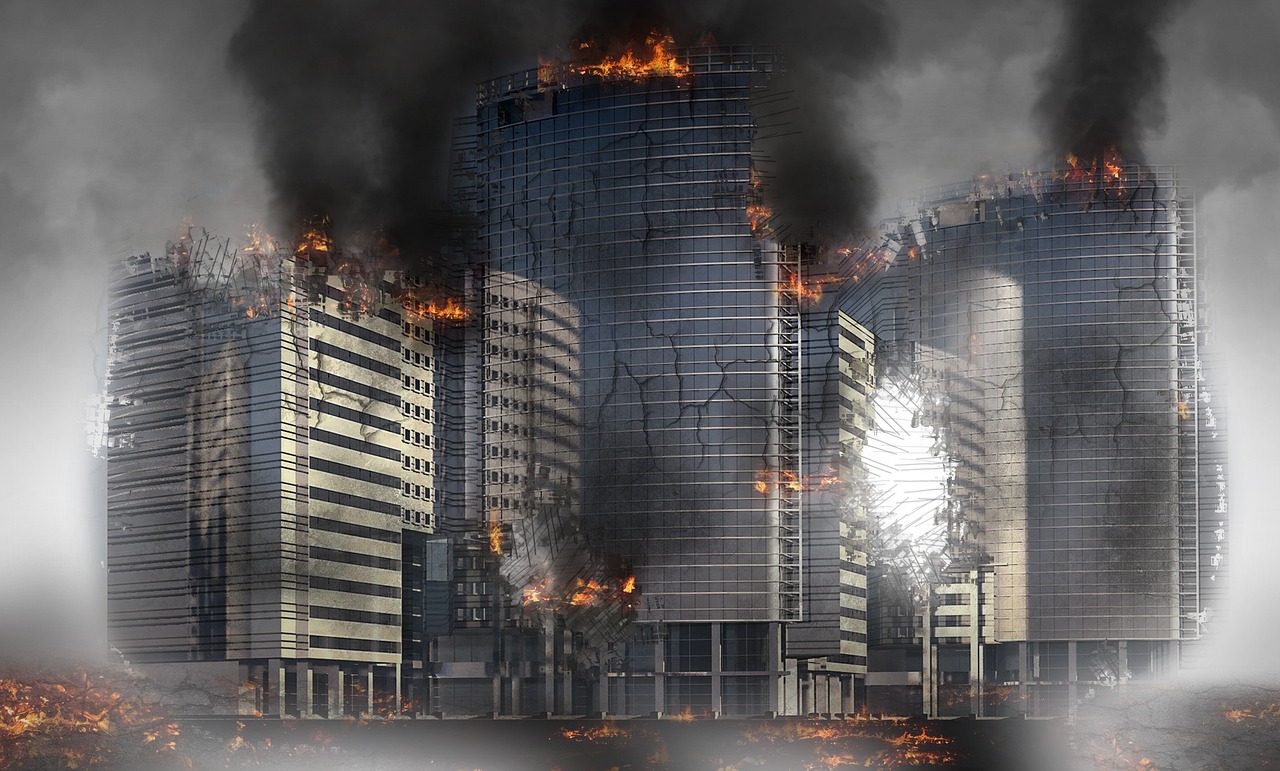
Understanding the Unique Needs
When it comes to disaster preparedness, understanding the unique needs of persons with disabilities is not just important—it's absolutely essential. Each individual may have different challenges that influence how they respond to emergencies. For instance, someone who is visually impaired might rely on auditory cues, while a person with mobility challenges may need specific transportation arrangements. By recognizing these diverse needs, we can develop tailored strategies that ensure everyone is adequately prepared.
It's crucial to remember that disabilities can vary widely, encompassing physical, sensory, intellectual, and emotional challenges. Each type of disability may necessitate different considerations during a disaster. For example, individuals with hearing impairments might require visual alerts for alarms, whereas those with cognitive disabilities may benefit from simplified instructions. Tailoring preparedness plans to meet these requirements can make a significant difference in how effectively individuals respond to emergencies.
Furthermore, the impact of a disaster can amplify existing challenges. For example, during a natural disaster, a person who uses a wheelchair may face obstacles such as inaccessible evacuation routes or shelters. Therefore, it’s vital to incorporate accessibility into every aspect of disaster planning. This includes ensuring that emergency services are trained to assist individuals with disabilities and that public spaces are equipped to accommodate their needs.
To illustrate the unique needs of persons with disabilities during emergencies, consider the following table:
| Type of Disability | Unique Needs |
|---|---|
| Visual Impairment | Auditory alerts, tactile maps, and guided assistance. |
| Hearing Impairment | Visual alarms, written instructions, and communication devices. |
| Mobility Challenges | Accessible transportation, ramps, and accessible shelters. |
| Cognitive Disabilities | Simplified communication, visual aids, and support from caregivers. |
Ultimately, the goal is to create disaster preparedness plans that are inclusive and considerate of the unique needs of persons with disabilities. This means engaging with individuals, listening to their experiences, and incorporating their feedback into planning efforts. By doing so, we not only enhance their safety but also empower them to take an active role in their own preparedness. After all, who knows better about their needs than the individuals themselves?
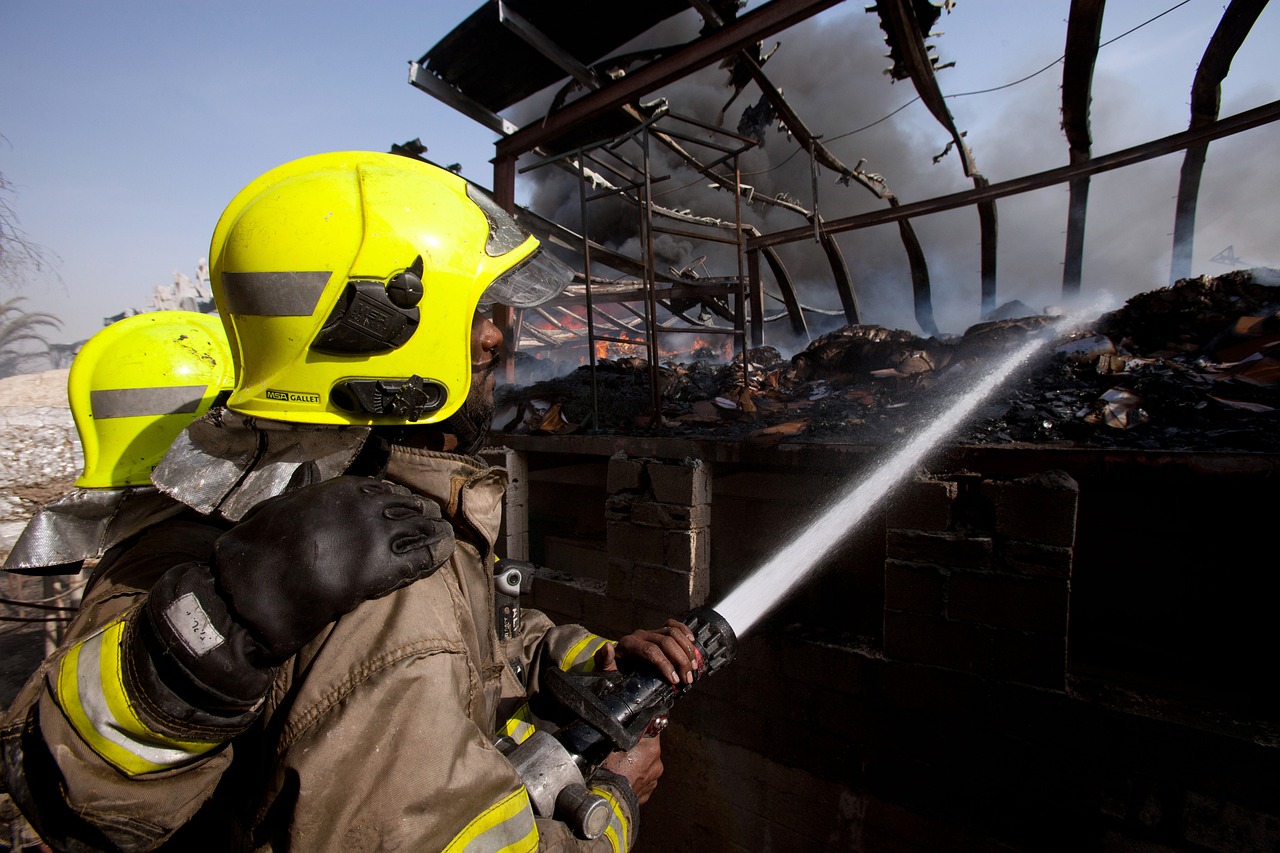
Creating an Emergency Plan
When it comes to disaster preparedness, having a well-thought-out emergency plan is not just important; it’s absolutely essential, especially for persons with disabilities. Think of it as your roadmap to safety when the unexpected strikes. An effective emergency plan can mean the difference between chaos and calm, ensuring that you and your loved ones are ready to respond swiftly and efficiently. So, what should you include in your personalized emergency plan? Let’s break it down into key components that cater specifically to the needs of individuals with disabilities.
First and foremost, communication is vital. You need to establish clear methods of communication that everyone understands. This might involve identifying a trusted friend or family member who can relay information in case of an emergency. Consider using various forms of communication, such as text messages, phone calls, or even social media, to ensure that you receive timely updates. In addition, think about how you can communicate your own needs during a disaster. This could include having a list of your specific requirements, such as medications or mobility aids, that can be shared with responders.
Next, transportation arrangements are crucial. If you rely on assistive devices or have mobility challenges, it’s important to plan how you will evacuate your home or reach a safe location. This might mean identifying accessible transportation options in advance. You can even create a list of local services that offer accessible transport during emergencies. Remember, it’s not just about getting to safety; it’s about getting there in a way that doesn’t compromise your well-being.
Designated meeting places are another critical element of your emergency plan. In the chaos of a disaster, knowing where to go can provide a sense of direction and security. Choose a location that is easy to access and ideally familiar to everyone involved. This could be a neighbor’s house, a community center, or a local park. Make sure everyone in your support network knows the plan and has a copy of it. You can even create a simple visual map to make it easier for everyone to understand.
To illustrate these components, here’s a quick table summarizing the essential elements of an emergency plan:
| Component | Description |
|---|---|
| Communication Methods | Establish clear ways to receive and share information. |
| Transportation Arrangements | Plan for accessible transportation options. |
| Designated Meeting Places | Select safe, accessible locations to regroup. |
Finally, it’s essential to regularly review and practice your emergency plan. Just like a fire drill at school, practicing can help everyone feel more comfortable and confident when disaster strikes. You might even want to involve your support network in these drills so that everyone understands their roles and responsibilities. Remember, planning is not a one-time event; it’s an ongoing process. As your needs change or new resources become available, be sure to update your plan accordingly.
In summary, creating an emergency plan tailored for persons with disabilities involves thoughtful consideration of communication, transportation, and designated meeting places. By taking the time to develop and practice your plan, you can enhance your safety and resilience during emergencies. So, are you ready to take the first step towards preparedness?
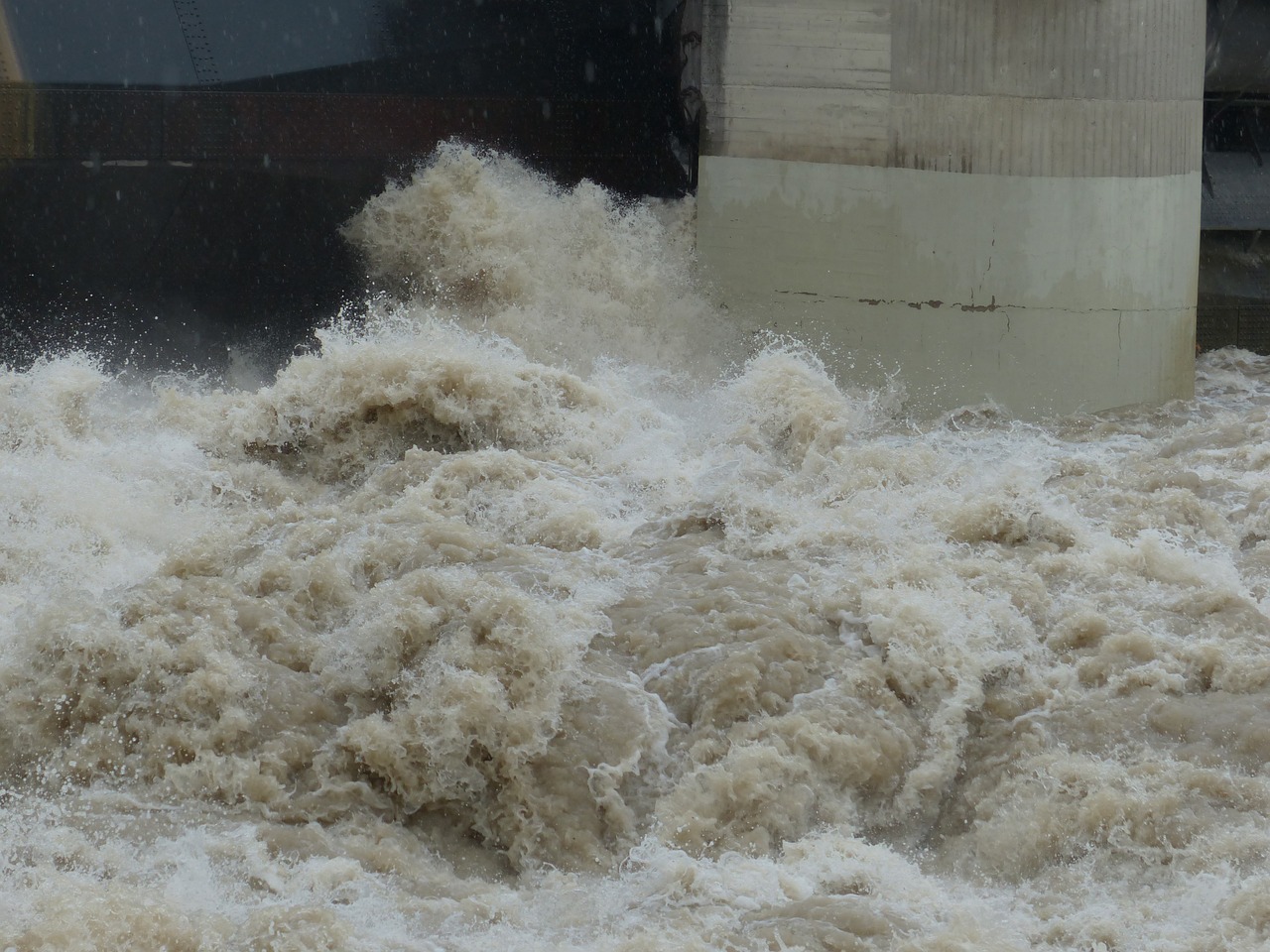
Communication Strategies
Effective communication during a disaster is not just a luxury; it’s a necessity, especially for persons with disabilities. Imagine being in a chaotic situation where every second counts, yet you can’t access critical information. That’s why developing robust communication strategies is paramount. First and foremost, it's essential to identify the various methods that can be employed to relay information quickly and clearly. This includes using visual aids, auditory signals, and even text messaging systems to ensure that everyone is on the same page.
Consider this: if a disaster strikes, how will you know what to do? Will you be able to receive alerts and instructions? One way to enhance communication is by establishing a reliable network of contacts. This can include friends, family, and local community organizations that can provide real-time updates. Furthermore, having a designated person who can assist in relaying information can be incredibly beneficial, especially for those with hearing or vision impairments.
Another vital aspect of communication strategies is utilizing technology. In today's digital age, various tools and applications are designed specifically to aid individuals with disabilities during emergencies. For instance, apps that provide real-time alerts and updates can be lifesavers. Additionally, social media platforms can serve as alternative channels for disseminating information quickly. Imagine being able to check your phone and receive alerts tailored to your specific needs—all thanks to technology!
Furthermore, it’s crucial to consider the format in which information is shared. Not everyone processes information the same way. Therefore, providing updates in multiple formats—such as braille, large print, and audio formats—ensures that everyone can understand what’s happening. This approach not only empowers individuals but also fosters a sense of community and support during trying times.
Lastly, remember that communication should never be a one-way street. Encourage feedback and questions from individuals with disabilities. This not only helps clarify any misunderstandings but also reinforces their confidence in the information being shared. After all, in the face of a disaster, we’re all in this together, and clear, open lines of communication can make a world of difference.
- What should I include in my emergency communication plan? It's essential to outline how you will receive alerts, who your support contacts are, and what methods you will use to communicate during a disaster.
- How can technology help in emergencies? Various apps can provide real-time alerts and updates tailored to your needs, ensuring you stay informed during a crisis.
- What formats should emergency information be provided in? Information should be available in braille, large print, audio formats, and visual aids to cater to different needs.
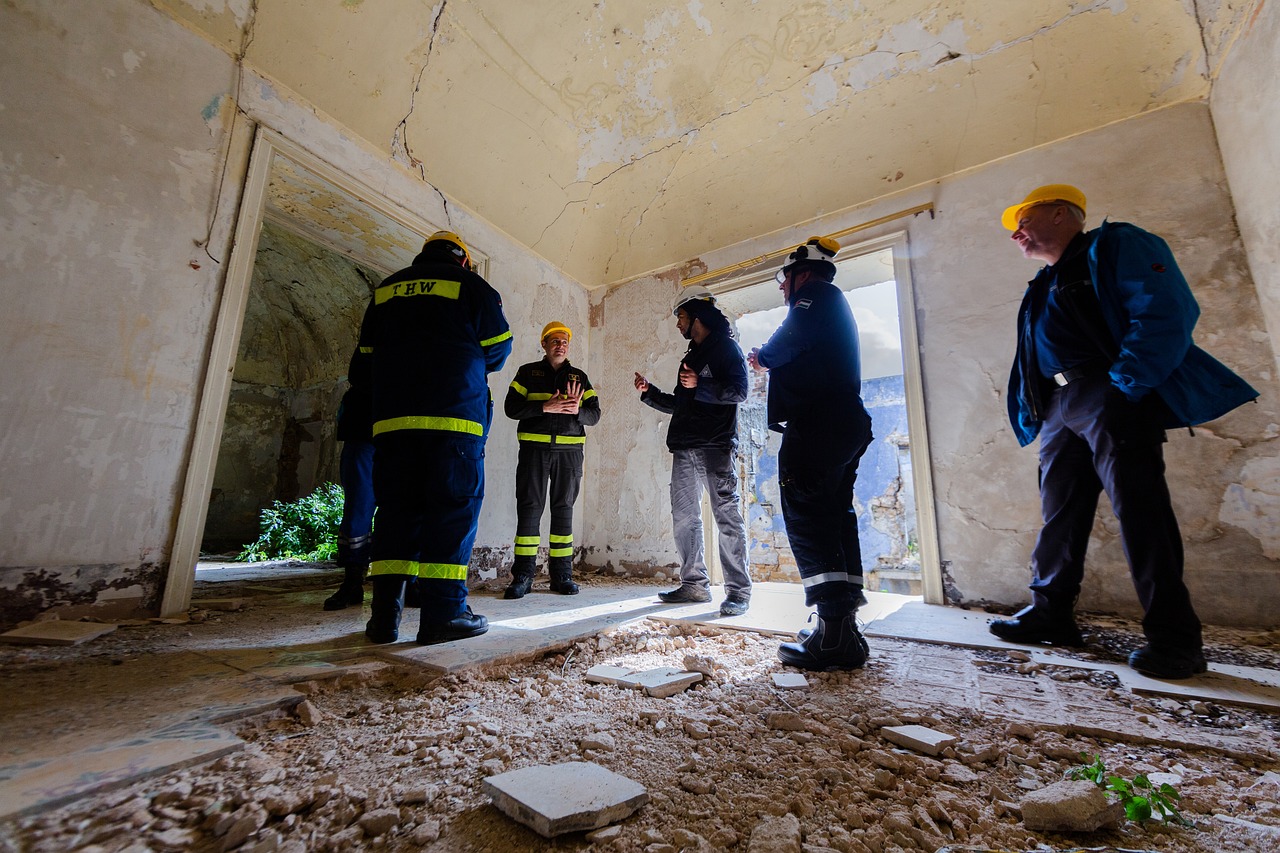
Accessible Information Formats
In the chaos of a disaster, clear communication can be a matter of life and death. For individuals with disabilities, having access to information in formats they can understand is **absolutely essential**. Imagine being in a situation where crucial instructions are only available in a format that you cannot read or comprehend; this can lead to confusion and panic. Therefore, it is vital to ensure that emergency information is available in multiple accessible formats.
Accessible information formats include braille, large print, audio recordings, and even visual aids like pictograms. Each of these formats serves a unique purpose, catering to various disabilities. For instance, braille is indispensable for individuals who are blind or have severe visual impairments, while large print materials can greatly assist those with partial sight. On the other hand, audio formats are beneficial for individuals who may have difficulty reading due to cognitive disabilities or learning difficulties.
Moreover, it’s not just about the format; it’s about how the information is presented. During an emergency, the **clarity and simplicity** of the message can significantly affect how well it is understood. For example, using straightforward language and avoiding jargon can make a huge difference. When creating emergency communication materials, consider the following:
- Use clear and concise language: Avoid technical terms and keep sentences short.
- Incorporate visual elements: Use symbols or images that can help convey the message quickly.
- Provide translations: Ensure that information is available in multiple languages if your community is diverse.
Additionally, organizations and local governments should prioritize the creation of these accessible formats in their emergency planning. It’s not just about compliance with regulations; it’s about ensuring that **everyone** can respond effectively during a crisis. By investing in the creation of accessible information formats, we can foster a safer environment for individuals with disabilities.
Ultimately, the goal is to create a community where everyone, regardless of their abilities, has the tools and information they need to navigate emergencies. This requires collaboration among local authorities, disability advocates, and community members to ensure that everyone’s needs are met. As we work toward a more inclusive approach to disaster preparedness, we must remember that **accessibility is not just a feature; it’s a fundamental right**.
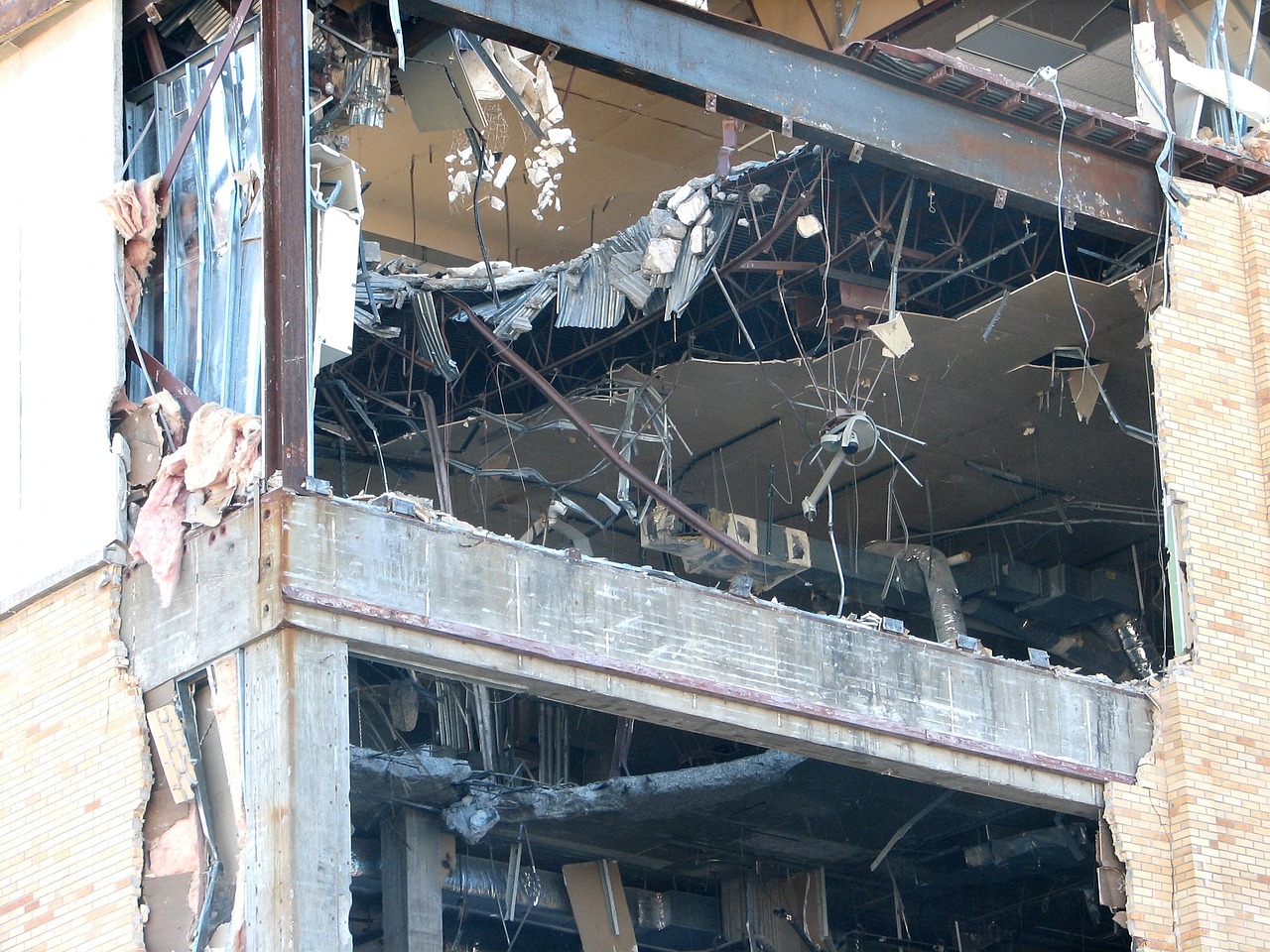
Utilizing Technology
In today's fast-paced world, technology plays a pivotal role in enhancing disaster preparedness, especially for individuals with disabilities. Imagine being in the midst of a chaotic situation, and your smartphone becomes your lifeline. This is the power of technology! With the right tools and applications, individuals can stay informed and connected, ensuring their safety and well-being during emergencies.
First and foremost, communication is key during a disaster. There are various apps designed specifically for individuals with disabilities that can facilitate effective communication. For instance, text-to-speech applications can be invaluable for those with visual impairments, allowing them to receive and send messages easily. Similarly, for individuals who are hard of hearing, video calling apps can provide a visual means of communication, ensuring that they are not left out of critical conversations.
Moreover, social media platforms can serve as a double-edged sword in emergencies. On one hand, they can spread information quickly; on the other hand, they can also lead to misinformation. It’s crucial to follow reliable sources and organizations that provide real-time updates during disasters. Setting up alerts for specific organizations can help ensure that individuals receive timely and accurate information.
Another exciting advancement is the use of wearable technology. Devices like smartwatches can be programmed to send alerts or notifications to emergency contacts. This feature is particularly beneficial for individuals with mobility challenges, as it allows them to communicate their situation without needing to reach for their phone. Additionally, some wearables come equipped with health monitoring features that can alert caregivers in case of emergencies, providing an extra layer of safety.
Furthermore, there are innovative platforms that focus on community engagement. For example, neighborhood apps can connect individuals with disabilities to local resources and support networks. These platforms can help users find nearby shelters, accessible transportation options, and even volunteer assistance during a disaster. By leveraging these technologies, individuals can create a robust support network that enhances their preparedness.
It's also essential to consider the accessibility of technology itself. Many apps and devices now come with built-in accessibility features, such as voice commands, screen readers, and customizable interfaces. This inclusivity ensures that everyone, regardless of their abilities, can utilize the technology available to them. As technology continues to evolve, it’s important for developers to prioritize accessibility in their designs, making it easier for individuals with disabilities to navigate and utilize these tools effectively.
In conclusion, utilizing technology in disaster preparedness not only empowers individuals with disabilities but also enhances their resilience. By embracing these tools, they can ensure they are not just surviving but thriving, even in the face of adversity. So, the next time you think about disaster preparedness, remember that your smartphone or smartwatch might just be the key to staying safe and connected!
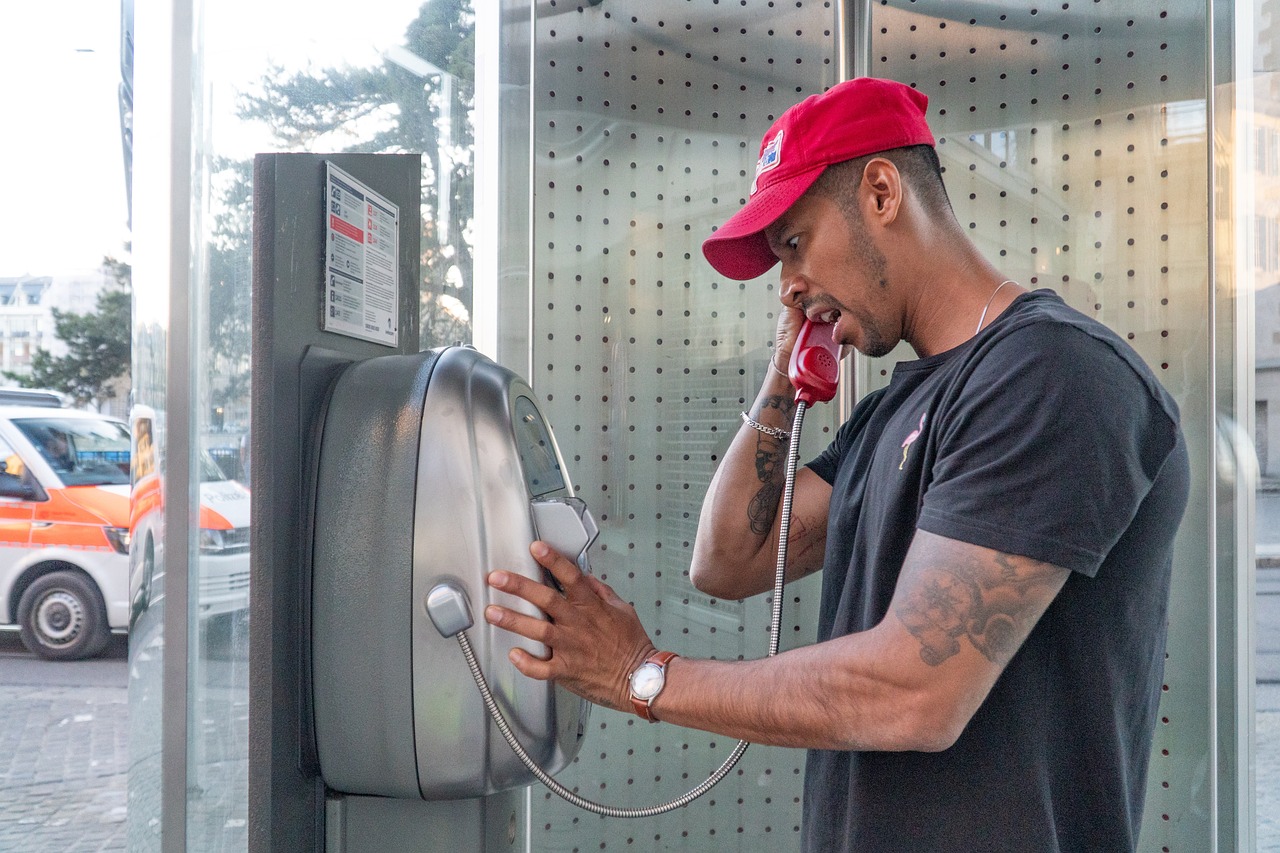
Emergency Kit Essentials
When it comes to disaster preparedness, having a well-thought-out emergency kit is absolutely essential, especially for individuals with disabilities. This kit should be personalized to meet specific needs, ensuring that everyone has the necessary resources at their fingertips when disaster strikes. Imagine being in a situation where every second counts; having the right supplies can make all the difference. So, what should be included in an emergency kit tailored for persons with disabilities? Let's break it down.
First and foremost, it’s crucial to consider the unique requirements of different disabilities. For instance, someone who relies on a wheelchair may need items that facilitate mobility, while someone with a visual impairment might need accessible information. Here are some key components to include in the emergency kit:
- Medications: Ensure you have a sufficient supply of all necessary medications, including prescriptions and over-the-counter drugs. Don’t forget to include a list of medications and dosages for easy reference.
- Mobility Aids: If you use a cane, walker, or wheelchair, make sure to have any necessary accessories, such as spare batteries for powered devices or a repair kit.
- Communication Devices: Keep a charged mobile phone, a portable charger, and any specialized devices you may need to stay connected. Consider including a whistle or personal alarm for signaling help if needed.
- Personal Care Items: Include hygiene products, such as wipes, hand sanitizer, and any specific personal care items you may require.
- Emergency Contact Information: Have a printed list of emergency contacts and any critical medical information, such as allergies or medical conditions.
In addition to the items listed above, think about including comfort items that can help ease anxiety during stressful situations. A favorite book, a small toy, or a blanket can provide emotional support when everything feels overwhelming. Remember, an emergency kit is not just about survival; it’s also about maintaining some semblance of normalcy amidst chaos.
To help you visualize what a well-stocked emergency kit looks like, here’s a simple table outlining essential items and their purposes:
| Item | Purpose |
|---|---|
| Medications | To manage health conditions and prevent complications. |
| Mobility Aids | To ensure safe and effective movement during evacuations. |
| Communication Devices | To stay connected and informed during emergencies. |
| Personal Care Items | To maintain hygiene and comfort. |
| Emergency Contact Information | To provide critical information to first responders. |
Ultimately, the goal is to create an emergency kit that feels like a safety net, ready to catch you when you need it most. By taking the time to prepare thoughtfully, individuals with disabilities can significantly enhance their readiness and resilience in the face of disasters. Remember, preparedness is not just about having the right items; it's about feeling empowered and secure in your ability to handle whatever comes your way.
Q: How often should I check my emergency kit?
A: It's recommended to check your emergency kit at least twice a year to ensure that all items are up-to-date, especially medications and perishables.
Q: What if I have specific dietary needs?
A: Include non-perishable food items that meet your dietary requirements, and don't forget to pack any necessary cooking equipment if needed.
Q: Can I prepare an emergency kit for someone else?
A: Absolutely! Just make sure to consider their specific needs and preferences when putting together the kit.
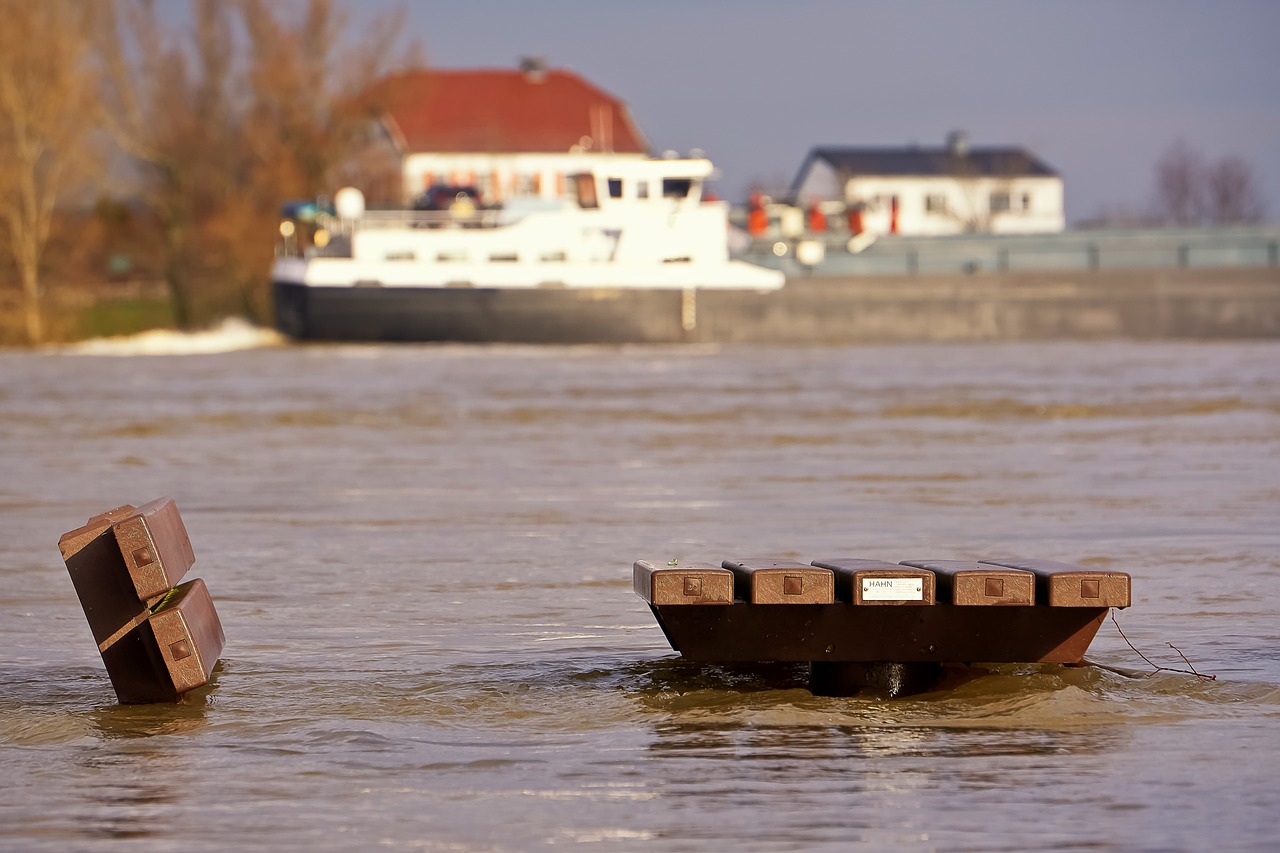
Community Support and Resources
Community resources play a vital role in disaster preparedness for persons with disabilities. It's like having a safety net that catches you when you fall, ensuring that no one is left behind during emergencies. Local organizations, government agencies, and volunteer groups often provide essential support before, during, and after a disaster. The key is to tap into these resources and understand how they can enhance your preparedness and recovery efforts. Imagine knowing that a network of people is ready to help you when the unexpected strikes; it can bring a sense of security that is invaluable.
One of the most effective ways to ensure that individuals with disabilities are prepared for disasters is to connect with local organizations that specialize in disability services. These organizations often have tailored resources and programs designed to assist in emergency situations. For instance, they may offer workshops that educate individuals on how to create emergency plans specific to their needs, or they might provide information about accessible shelters and transportation options. By engaging with these groups, individuals can gain access to critical information and support, which can make a world of difference during a crisis.
Furthermore, local government agencies often have programs in place to assist persons with disabilities during disasters. These can include:
- Emergency notification systems that provide alerts in accessible formats.
- Transportation services for evacuation or access to shelters.
- Emergency response teams trained to assist individuals with disabilities.
It's essential to stay informed about these resources and to reach out to them well before a disaster occurs. Think of it like planting seeds; the more you nurture your connections with these organizations, the more robust your support network will become when you need it most.
Additionally, building a support network is crucial. This network can consist of friends, family, neighbors, and local organizations that can provide assistance during emergencies. Having a reliable group of people who understand your specific needs can make a significant difference. You might want to establish a buddy system where someone checks in on you regularly or helps you navigate emergency situations. In times of crisis, these relationships can be a lifeline, providing not just physical assistance but also emotional support.
Don't forget about training and awareness programs offered by various organizations. Many nonprofits and community centers provide workshops that focus on emergency preparedness tailored for persons with disabilities. These programs often cover topics such as:
- How to create a personalized emergency plan.
- Understanding local emergency services and how to access them.
- Practicing evacuation routes and procedures.
Participating in these programs is a proactive step toward ensuring that you and your loved ones are ready for any situation. Knowledge is power, and when it comes to emergencies, being prepared can mean the difference between chaos and calm.
In summary, community support and resources are invaluable assets in disaster preparedness for persons with disabilities. By connecting with local organizations, building a strong support network, and participating in training programs, individuals can enhance their readiness and resilience. Remember, it’s not just about surviving a disaster; it’s about thriving in the aftermath, and that starts with a solid foundation of community support.
Q: What types of community resources are available for persons with disabilities during a disaster?
A: Community resources can include local organizations specializing in disability services, government emergency programs, and volunteer groups that provide assistance with evacuation, transportation, and shelter access.
Q: How can I build a support network for emergencies?
A: You can build a support network by connecting with friends, family, neighbors, and local organizations. Establishing a buddy system can also be effective, where someone checks in on you during emergencies.
Q: Are there training programs available for disaster preparedness?
A: Yes, many nonprofits and community centers offer training programs that focus on emergency preparedness tailored for persons with disabilities. These programs can help you create a personalized emergency plan and practice evacuation procedures.

Building a Support Network
Establishing a support network is a crucial aspect of disaster preparedness, especially for individuals with disabilities. Imagine facing a storm without anyone to turn to; it can be overwhelming. However, when you have a reliable support system in place, it can make all the difference. A support network is not just about having friends or family nearby; it's about creating a circle of people who understand your unique needs and can assist you in times of crisis.
First, consider the people in your life who you trust and who are willing to help. This could include friends, family members, neighbors, or even coworkers. It's essential to communicate your specific needs with them. For instance, if you require assistance with mobility, let them know how they can help you get to safety. Having open conversations about your requirements ensures that everyone is on the same page and prepared to act when the time comes.
In addition to your immediate circle, don't forget about local organizations and community groups that focus on disability support. Many communities have resources dedicated to assisting individuals with disabilities during emergencies. These organizations can offer valuable information, resources, and even training sessions on disaster preparedness. Connecting with such groups can expand your network and provide additional layers of support.
It's also beneficial to create a communication plan within your support network. This plan should outline how you and your support team will stay in touch before, during, and after a disaster. You might consider using various methods of communication, such as texting, phone calls, or social media, depending on what works best for everyone involved. This way, if an emergency strikes, you can quickly relay information and coordinate your response.
Finally, consider participating in community drills or training sessions that focus on emergency preparedness. These events not only provide you with essential skills but also allow you to meet others who are interested in building their support networks. By working together with others in your community, you can foster a sense of camaraderie and ensure that everyone is equipped to handle emergencies effectively.
Building a support network takes time and effort, but the peace of mind it brings is invaluable. Remember, in times of crisis, it's not just about survival; it's about having the right people by your side to help you navigate through the challenges that may arise.
- What should I include in my support network? Your support network should include trusted friends, family, neighbors, and local organizations that understand your specific needs.
- How can I communicate my needs to my support network? Openly discuss your specific requirements and how others can assist you during emergencies. Consider creating a communication plan.
- Are there community resources available for disaster preparedness? Yes, many local organizations offer resources and training for individuals with disabilities to enhance their emergency preparedness.
- How can I find local organizations that support individuals with disabilities? Start by searching online for disability advocacy groups in your area or ask for recommendations from your current support network.

Training and Awareness Programs
When it comes to disaster preparedness, knowledge is power. For persons with disabilities, participating in can be a game-changer. These programs are designed not only to educate individuals about potential emergencies but also to equip them with the skills necessary to respond effectively. Imagine being in a room filled with people, all learning together how to handle a crisis—this shared experience can foster a sense of community and support among participants.
Training programs often cover a variety of topics, including how to create personalized emergency plans, recognize warning signs of impending disasters, and practice evacuation procedures. These sessions can be tailored to meet the unique needs of different disabilities. For instance, someone with mobility challenges might focus on accessible evacuation routes, while someone with hearing impairments may learn about visual alerts or text-based communication methods during emergencies.
One of the most beneficial aspects of these programs is the opportunity for hands-on practice. Participants can engage in simulated emergency scenarios, which not only boosts their confidence but also helps solidify the knowledge they've gained. It's one thing to hear about what to do during a disaster, but it's entirely different to actually practice those skills in a controlled environment. This hands-on approach can make a world of difference when the real situation arises.
Moreover, many organizations offer training sessions that are specifically designed for caregivers and family members of persons with disabilities. By educating these supporters on how to assist individuals during emergencies, the entire support network becomes more robust. It's about creating a team that is ready to respond, and that starts with everyone being on the same page.
In addition to in-person training, online resources and webinars have become increasingly popular. These platforms allow individuals to access vital information at their convenience, making it easier for everyone to stay informed and prepared. Many organizations also provide downloadable materials that can be printed or shared digitally, ensuring that the information reaches those who need it most.
In summary, training and awareness programs are essential in enhancing disaster preparedness for persons with disabilities. They not only provide crucial information but also foster a sense of community and empowerment. By participating in these programs, individuals can take proactive steps towards ensuring their safety and resilience in the face of emergencies.
Q: What types of disabilities are considered in training programs?
A: Training programs typically consider a wide range of disabilities, including mobility impairments, sensory impairments, cognitive disabilities, and more. The goal is to tailor the training to meet the specific needs of each individual.
Q: Are these training programs available online?
A: Yes, many organizations offer online training sessions and resources that can be accessed from home. This makes it easier for individuals to participate at their convenience.
Q: How can I find a training program in my area?
A: You can start by contacting local disability advocacy organizations, community centers, or emergency management agencies. They often have information on upcoming training sessions.
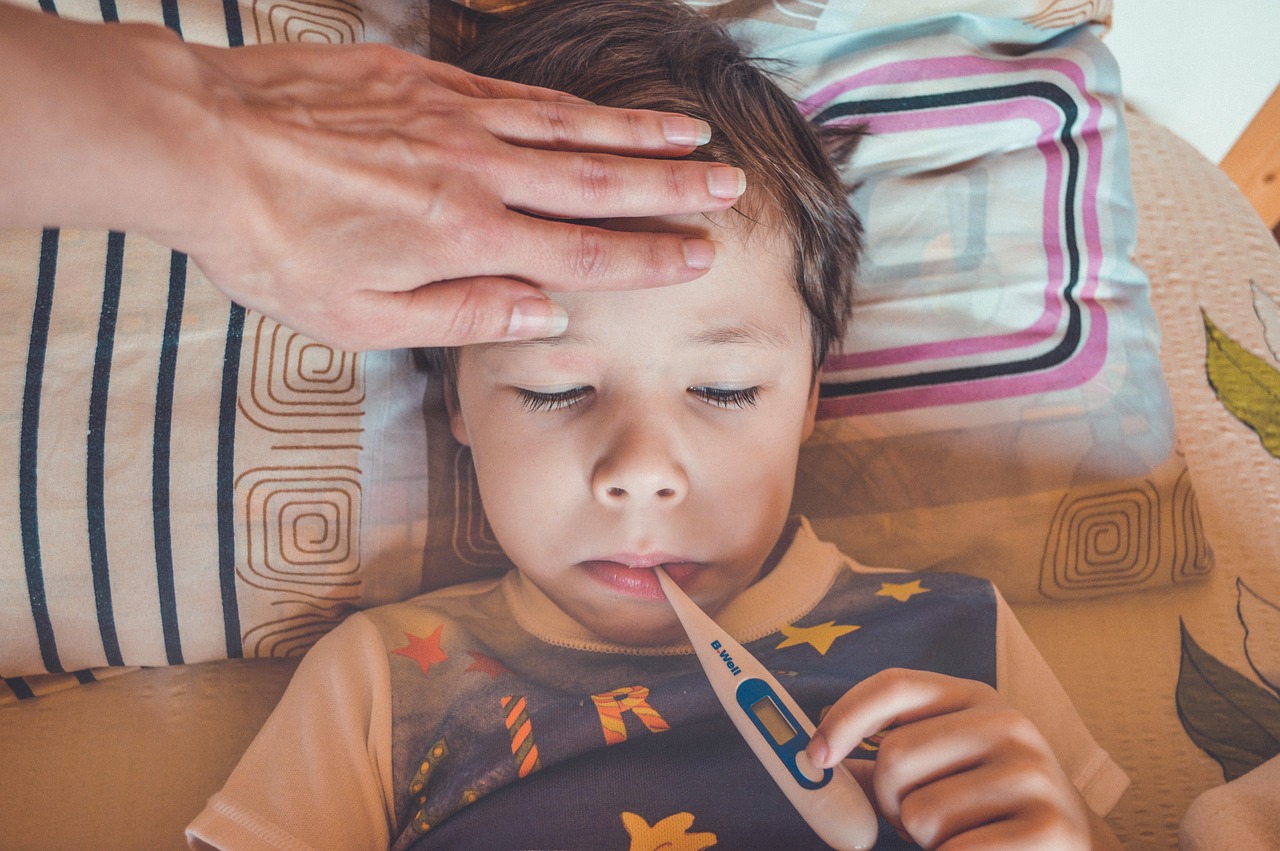
Post-Disaster Recovery Considerations
Recovering from a disaster is never easy, especially for individuals with disabilities. The road to recovery can be filled with unique challenges that require careful planning and consideration. It’s like trying to navigate a maze where every turn presents a new obstacle. Understanding these challenges is crucial for ensuring a smoother transition back to normalcy.
One of the primary concerns during recovery is access to essential services. Individuals with disabilities may face barriers in obtaining medical care, housing, and transportation. For example, if a person relies on a wheelchair, finding accessible housing after a disaster can be a daunting task. It’s essential to have a list of local resources and organizations that specialize in assisting individuals with disabilities during recovery. These organizations can provide critical support, such as:
- Accessible shelters and housing options
- Transportation services tailored for individuals with mobility challenges
- Medical assistance and rehabilitation services
Moreover, emotional and psychological support is equally important during the recovery phase. Disasters can lead to feelings of anxiety, fear, and uncertainty, particularly for those with disabilities who may already face additional stressors in their daily lives. Establishing a support network of friends, family, and community members can provide the emotional backing needed to navigate this tough time.
It’s also vital to consider the importance of communication during recovery. Many individuals with disabilities rely on specific communication methods, and ensuring that information about recovery resources is available in accessible formats can make a significant difference. This could include providing updates via:
- Text messages for those with hearing impairments
- Visual aids for individuals with cognitive disabilities
- In-person briefings for those who benefit from face-to-face communication
Furthermore, many recovery programs may not initially consider the specific needs of persons with disabilities. Advocating for inclusive recovery strategies is essential. This means engaging with local authorities and organizations to ensure that recovery plans incorporate accessibility features and address the unique needs of individuals with disabilities.
Finally, it's important to remember that recovery is a gradual process. Just like a flower takes time to bloom after a storm, individuals with disabilities may require ongoing support and resources to fully regain their footing. Establishing a long-term recovery plan that includes regular check-ins with support networks and community resources can help ensure that no one is left behind.
Q: What should I include in my post-disaster recovery plan?
A: Your recovery plan should include contact information for local support organizations, a list of accessible housing options, and a communication strategy to stay informed about available resources.
Q: How can I find emotional support during recovery?
A: Reach out to local mental health services, support groups, or community organizations that specialize in assisting individuals with disabilities. Connecting with friends and family can also provide emotional support.
Q: What are some resources available for individuals with disabilities after a disaster?
A: Resources can include accessible shelters, transportation services, medical assistance programs, and advocacy groups that focus on disability rights and recovery.
Frequently Asked Questions
- What should I include in an emergency plan for individuals with disabilities?
Your emergency plan should be personalized and include communication methods, transportation arrangements, designated meeting places, and specific needs based on the type of disability. It’s important to ensure that everyone involved understands the plan and can execute it effectively.
- How can I ensure that emergency information is accessible to everyone?
To make emergency information accessible, provide it in various formats such as braille, large print, and audio. Additionally, consider using visual aids and clear, simple language to ensure understanding by all individuals, regardless of their disabilities.
- What technology can assist persons with disabilities during a disaster?
There are several tools and apps designed to help individuals with disabilities stay informed during emergencies. Examples include alert systems that send notifications via text or email, apps that provide real-time updates, and communication devices that facilitate interaction with emergency services.
- What essential items should be included in an emergency kit for persons with disabilities?
Your emergency kit should cater to specific needs and may include medications, mobility aids, personal hygiene items, and any necessary medical supplies. Don't forget to include food and water that meet dietary requirements, as well as any assistive devices that might be needed.
- How can I build a support network for disaster preparedness?
Building a support network involves connecting with friends, family, and local organizations who can provide assistance during emergencies. Consider organizing regular meetings to discuss plans and resources, and ensure that everyone knows their role in the event of a disaster.
- What training programs are available for persons with disabilities regarding emergency preparedness?
Various organizations offer training and awareness programs aimed at educating individuals with disabilities about emergency readiness. These programs may cover topics such as evacuation procedures, first aid, and how to use assistive technology effectively during a disaster.
- What unique challenges do persons with disabilities face during post-disaster recovery?
Post-disaster recovery can be particularly challenging due to physical, emotional, and logistical barriers. Individuals may face difficulties accessing resources, navigating damaged environments, and dealing with the psychological impact of the disaster. Tailored support services are crucial for a smoother recovery process.



















